The Georgia Division SCV has researched the development of the official GEORGIA FLAG from its first mention in the official records of the state government to present.
Question: When did the State of Georgia first adopt an official flag?
Answer: Following the American Revolution, it was decided that all of the sovereign states should adopt a flag design. Although no official action has ever been found in the record, a common design was seen shortly thereafter and was used frequently until 1879. It was a blue field with a white Georgia State Seal in the center. (Authority: Ron. Ben Fortson, Secretary of State of Georgia, June 1973.)
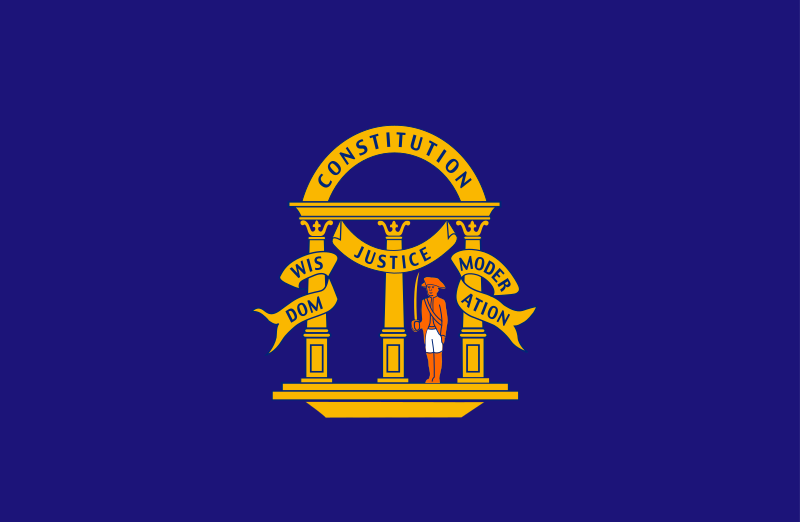
Question: If no record is found that the first commonly used flag was officially adopted, when was the first official flag adopted?
Answer: During the 1879 session of the Georgia General Assembly “… an Act to declare and establish the flag for the State of Georgia …” was introduced by a prominent Senator from Waynesboro named Col. Herman H. Perry. Col. Perry was a well known lawyer and former colonel in the Confederate States Army. His design was an adaptation of the first national flag of the Confederate States of America, commonly know as “The Stars and Bars”. It was shown as a vertical blue bar on the flag staff third of the flag with the remainder covered by three horizontal bars of equal width. The middle bar was white with the upper and lower bars red. In 1905, the State Coat of Arms, or seal, was added in the middle of the blue bar. Col. Perry’s purpose was clearly to remember the Confederate States of America:, the fallen nation of which Georgia had been a part. Other former Confederate states also adopted variations of the “Stars and Bars”. (Authority: Georgia Official and Statistical Register, 1954-1955 published by the Georgia Secretary of State and Miss Carol Hart, Director of Archives.)
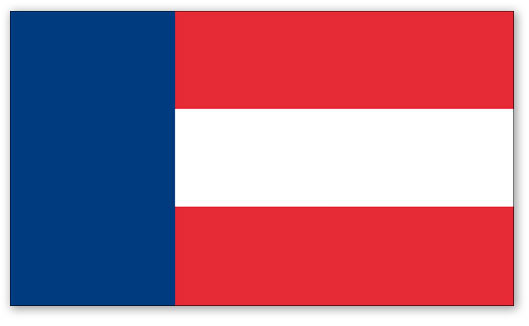
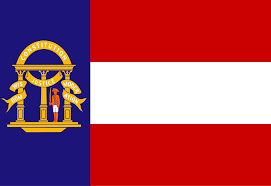
Question (prior 2003): The state flag is no longer shown with the Confederate “Stars and Bars” adaptation. When was it changed?
Answer: During the 1956 session of the Georgia General Assembly. (Authority: Acts of the Georgia General Assembly, 1956 session.)
Question: What is the 1956 design and where did it originate?
Answer: The 1956 design is an adaptation of the Cross of Saint Andrew. The version used in the official flag of Georgia was taken directly from the field or battle flag of the Provisional Army of the Confederate States of America. The design was used by the Army of the Confederate States of America – of which Georgia was apart -during the War Between the States.
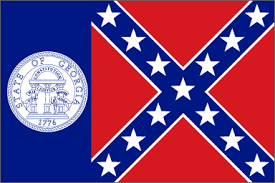
Question: Why did the Confederate States Army not use the “Stars and Bars” alone; after all, it was their official flag?
Answer: The Stars and Bars proved to be much too similar in design to the Stars and Stripes of the United States. Since the two nations were at war in 1861 when the design was created, needless casualties on both sides were encountered at the first Battle of Manassas due to the confusion caused by the similarity. A new design was ordered by the Confederate generals. The Cross of Saint Andrew, the ancient symbol of Scotland, was used by a Virginia regiment during the battle. A general suggested that it was sufficiently unique to serve the purpose. It was then adapted in square fashion so as to allow it to flow easily in the breeze. The flag was then carried by the combat troops of the Confederate nation for the remainder of its existence. (Authority: ‘The Flags of the Confederacy’ by Devereaux Cannon.)
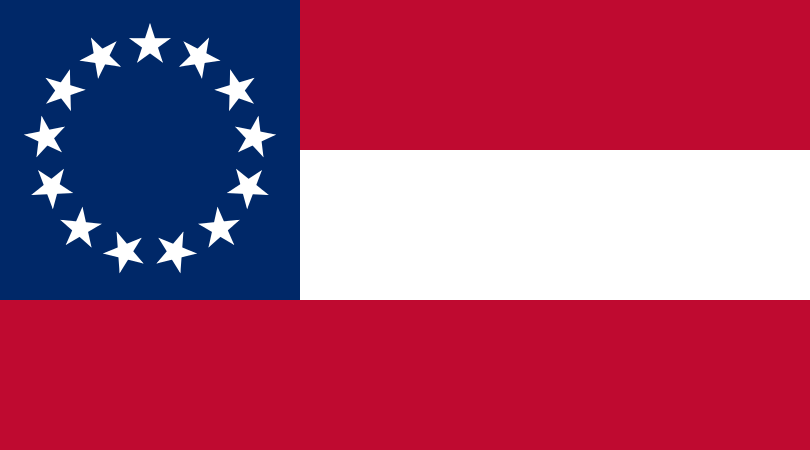
Question: Who proposed that the Georgia flag be changed to reflect the Cross of Saint Andrew rather than the Stars and Bars?
Answer: Senator Willis Neal Hardin and Senator Jefferson Lee Davis introduced the bill that was drafted by the same man who designed and created the 1956 State Flag, State Democratic Party Chairman and Civil War buff John Sammons Bell. The new design was created because the old Confederate design had become “meaningless” in the words of Bell. He wanted to forever perpetuate the memory of the Confederate soldier who fought and died for his state. (Authority: Interview with John Sammons Bell by Vivian Price published in the ‘DeKalb News/Sun,’ page2-F 13 July 1988.)
Question: Why was the flag changed in 1956?
Answer: Judge John Sammons Bell, former Chief Judge of the Georgia Court of Appeals and designer of the current flag stated that the purpose of the change was “to honor our ancestors who fought and died and who have been so much maligned.” (Authority: Interview with John Sammons Bell by Vivian Price published in the ‘DeKalb News/Sun,’ page2-F 13 July 1988.)
Question: Some have claimed that the 1954 school desegregation decision by the U.S. Supreme Court stimulated the change in 1956. Is this true?
Answer: Concerning those who claim that the flag was “… designed as a last desperate gasp of defiance against integration,” Judge Bell said “Absolutely nothing could be further from the truth …every bit of it is untrue.” He further stated that” Anybody who says anything to the contrary is wrong or perpetuating a willful lie.” (Authority: Interview with John Sammons Bell by Vivian Price published in the ‘DeKalb News/Sun,’ page2-F 13 July 1988.)
Question: Some claim that Hardin, Davis and Bell might not be willing to tell the truth —that they might have tried to hide their ‘real’ purpose. Could this be true?
Answer: These gentlemen denied any such impropriety. In the year 1956 several newspaper accounts of the proposed change in the GEORGIA FLAG were published. In none of the articles was there any hint that the flag change was for any reason other than that stated by the gentlemen who proposed the change. (Authority: The Atlanta Journal, 2 Feb. 1956, page 6; The Atlanta Constitution, 2 Feb. 1956, page 8; The Atlanta Journal/Constitution, 5 Feb. 1956, page C-I; The Atlanta Constitution, 10 Feb. 1956, front page; The Atlanta Journal 10 Feb. 1956, page A-4.)
Question: Judge Bell is still alive yet Senator Hardin and Senator Davis are now deceased. Is there any evidence that they felt the same?
Answer: In letters to the Flag Facts Committee, the sons of both senators unequivocally stated that their fathers never mentioned any purpose for the redesign of the Georgia Flag other than as a means of honoring their ancestors who fought for Southern independence. They specifically stated that their fathers were disturbed that anyone would claim that they were using the flag change as a political issue. (Authority: Letters to the committee dated 17 Sept. 1990 from Willis Hardin, Jr. and letter to the committee dated I Feb. 1990 from Jefferson L. Davis, Jr.)
Question: Isn’t it true that these gentlemen would not have admitted to any motivation concerning defiance of integration in 1956?
Answer: Any reading of the newspapers in 1956 shows that politicians who believed in defiance of integration were not at all reluctant to say so in the news interviews. In fact some thought that political advantage could be gained by such positions. (Authority: The Atlanta Journal and The Atlanta Constitution during the period 1954 to 1956.)
Question: Is it just a coincidence that the flag was changed two years after the Brown vs. Board of Education case in the U.S. Supreme Court?
Answer: It must be remembered that Confederate patriotism was running high in 1956. On January 20 1956 it was announced that the Civil War Centennial Committee would be formed to plan commemorative events for the 100th anniversary of the War between the States. This coincided with the deaths of the last remaining Confederate veterans. The last soldier in Georgia died in 1952. The last soldier of the entire Confederacy died in 1959. In the years between, the old veterans were one by one passing away. A great deal of sympathy was felt throughout the South for the old soldiers and many commemorative activities took place. (Authority: The Atlanta Journal, 20 Jan. 1956, page A-5; ‘The South’s Last Boys in Gray’ by Professor Jay S. Hoar, University of Maine.)
Question: Since 1956, has the issue of the flag come before the General Assembly?
Answer: In the mid 1980s, the issue was brought up twice by a lady representing a portion of Sumter County. In 1970 a motion to postpone the resolution was overwhelmingly passed. When the issue came to the floor of the House of Representatives in 1972 it was defeated 139 to 20. Clearly, the General Assembly did not want to change the flag. In 1993, Governor Zell Miller proposed a change in the 1956 flag, but that measure was soundly defeated. In 2001, one-term Governor Roy Barnes thwarted the will of the people of Georgia by pushing through a change so rapidly that opposition was given no chance to object.
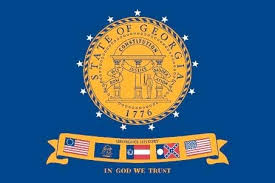
Question (prior to 2003): Why didn’t Governor Perdue keep his promise to let the people vote for the 1956 flag? Why didn’t he simply veto the flag bill (HB380)?
Answer: Governor Perdue knew that supporters of the 1956 flag were the driving force that elected him or rather, defeated Barnes. Yet, he lacked the fortitude to VETO the gutted flag bill (insult!) and force the issue. Instead he chose to sign it and blame the outcome on the General Assembly….it has been alleged that Perdue sold the flag vote for support of his budget and tax package. Governor Perdue has denied this allegation by writing “My administration was not part of any deal that limited the options for Georgians. Further, I did not tamper with the process to give one flag a greater likelihood of winning over another, nor did I ever authorize any legislative or budgetary trades in order to secure enough votes for passage of the legislation.” He also wrote, “While this bill did not include everything I asked for, I respect the decision of the elected members of the General Assembly and have signed HB 380 into law.” This is called shifting the blame. He still calls the March referendum on whether to return to the Ugliest Flag in North America a “choice.” He writes that “the process is complete” and he hopes that we’ll simply “turn the page” and move on.
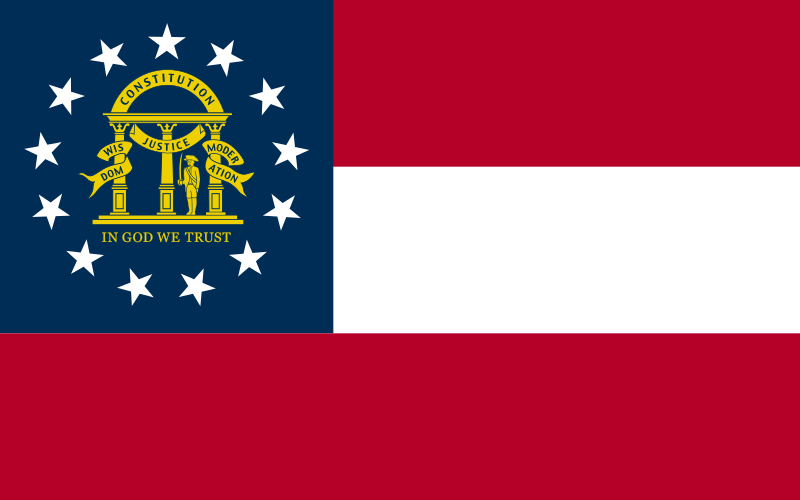
The flag pictured above is now the current flag that represents our Great State of Georgia. Sonny did allow the people of Georgia to vote. The choice for the previous “1956 Georgia Flag” was not given as one of the options though. This current flag is a result of a vote to choose between only two flags. The vote was for the “Roy Barnes Flag” or the “Sonny Perdue Flag” in 2003. The people of Georgia favored the flag that coincided with the fimiliar “Stars and Bars” of the Confederate States of America’s First National Flag.
